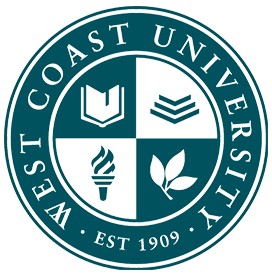Are you preparing for the TEAS (Test of Essential Academic Skills) exam and wondering how to maximize your study efforts? A comprehensive TEAS test study guide is an indispensable tool that can significantly enhance your chances of success. This guide will explain what a TEAS test study guide is, what it includes, and how to use it effectively to achieve your desired score.
TEAS Test Study Guide: Your Key to Nursing School Admission
A TEAS test study guide is a resource designed to help students prepare for the TEAS exam, a standardized test used to assess the academic readiness of applicants to nursing and allied health programs. The guide provides a comprehensive review of the subjects covered on the exam, along with practice questions and test-taking strategies.
What’s Included in a Comprehensive TEAS Test Study Guide?
A well-structured TEAS study guide typically includes the following key components:
- Content Review: In-depth coverage of the four main subject areas:
- Reading: Understanding passages, drawing inferences, and identifying main ideas.
- Math: Arithmetic, algebra, measurement, and data interpretation.
- Science: Anatomy and physiology, biology, chemistry, and scientific reasoning.
- English and Language Usage: Grammar, punctuation, vocabulary, and sentence structure.
- Practice Questions: Numerous practice questions that simulate the actual TEAS exam, allowing you to test your knowledge and identify areas for improvement.
- Answer Explanations: Detailed explanations for each practice question, helping you understand the reasoning behind the correct answer and learn from your mistakes.
- Test-Taking Strategies: Proven strategies and techniques to help you manage your time, reduce test anxiety, and maximize your score.
- Diagnostic Tests: Pre-tests and post-tests to assess your strengths and weaknesses and track your progress.
Maximizing Your Study Efforts with a TEAS Study Guide
To make the most of your TEAS test study guide, follow these effective strategies:
- Start with a Diagnostic Test: Take a diagnostic test to identify your strengths and weaknesses in each subject area. This will help you prioritize your study efforts and focus on the areas where you need the most improvement.
- Create a Study Schedule: Develop a realistic study schedule that allocates sufficient time for each subject area. Be consistent with your schedule and stick to it as much as possible.
- Review Content Thoroughly: Read through the content review sections carefully, taking notes and highlighting key concepts. Make sure you understand the fundamental principles and concepts in each subject area.
- Practice Regularly: Practice questions are crucial for TEAS preparation. Work through as many practice questions as possible, paying attention to the answer explanations.
- Analyze Your Mistakes: Don’t just memorize the answers. Take the time to analyze your mistakes and understand why you got the question wrong. This will help you avoid making the same mistakes on the actual exam.
- Use Test-Taking Strategies: Familiarize yourself with test-taking strategies such as time management, process of elimination, and educated guessing. Practice these strategies during your study sessions.
- Take Full-Length Practice Tests: Simulate the actual TEAS exam by taking full-length practice tests under timed conditions. This will help you build stamina and get used to the test format.
- Review and Refine: Regularly review your progress and adjust your study plan as needed. Focus on the areas where you are still struggling and continue to practice until you feel confident.
Understanding TEAS 7 Question Types
The TEAS 7 exam includes a variety of question types designed to assess different skills. These include:
- Multiple-Choice: Select the best answer from four options.
- Multiple-Select: Select all the correct answers from a list of options. Remember that partial credit is not given, so all correct answers must be selected for the question to be marked correct.
- Supply Answer: Fill in the blank with the correct word or number.
- Hot Spot: Click on the correct area of an image to answer the question.
TEAS 7 Exam Outline: A breakdown of the topics covered in each section.
- Ordered Response: Drag and drop responses to arrange them in the correct order. Similar to the multiple-select question type, partial credit is not given, and the entire question is marked incorrect if any response is out of order.
Effective Study Techniques
- Take a TEAS practice test to gauge your preparedness. Practice tests can reveal your weakest areas and help you focus your studying.
- Identify which TEAS questions you miss.
- Note the questions that you were unsure of, even if you answered correctly.
- Pinpoint the questions that took the longest to understand.
Using these questions to expose your struggles helps you know which areas need more attention. Consider why you struggled with certain questions. Was the material hard to understand? Were you unfamiliar with certain words? Do you need more practice with specific question types?
Answer Explanations
TEAS practice tests contain explanations that expound on each answer choice. While helpful, be cautious when assuming you understand a concept in depth just because an explanation makes sense. The explanation might only cover a narrow portion of a broad topic.
Comprehend Each Topic
The questions from the TEAS sample test are unlikely to appear on the actual test, so avoid memorizing the answers. If you only know the right answers without knowing why they are correct, you may not do as well as you hope.
Scoring of the TEAS Exam
There is no defined way to “pass” the TEAS exam. The exam evaluates how well you’ll handle nursing school curriculum, so what qualifies as “passing” is determined by the programs you apply to. You will have access to your scores within 48 hours of your testing date. Your scores are split into sections, with each question category and test section receiving its own score. A single score is compiled from your scores on the test sections.
TEAS Score Table: An example of how the TEAS exam is scored.
*Total and Content Area scores are adjusted to account for differences across forms (different versions of the TEAS exam).
TEAS Score Requirements
The score requirements can vary from school to school. Here are a few examples of TEAS score requirements from different schools across the country:
| College/University | TEAS Score Requirements |
|---|---|
| University of Texas Austin | 65% |
| University of Houston | |
| Indiana University | 65% |
| Georgia College | |
| University of New Mexico | 58.7% |
| University of San Diego | |
| University of Central Florida | 78% |
| West Coast University | |
| North Shore Community College | Reading: 69% Math: 73% Science: 50% English: 66.7% |
| North Virginia Community College | |
| Harford Community College | 58.7% |
| Collin College |





Conclusion
A TEAS test study guide is an essential resource for anyone preparing for the TEAS exam. By understanding what a TEAS test study guide is, what it includes, and how to use it effectively, you can significantly increase your chances of success and achieve your goal of getting accepted into a nursing or allied health program. Combine a comprehensive study guide with consistent practice, effective study strategies, and a positive attitude, and you’ll be well on your way to acing the TEAS exam. Good luck!

